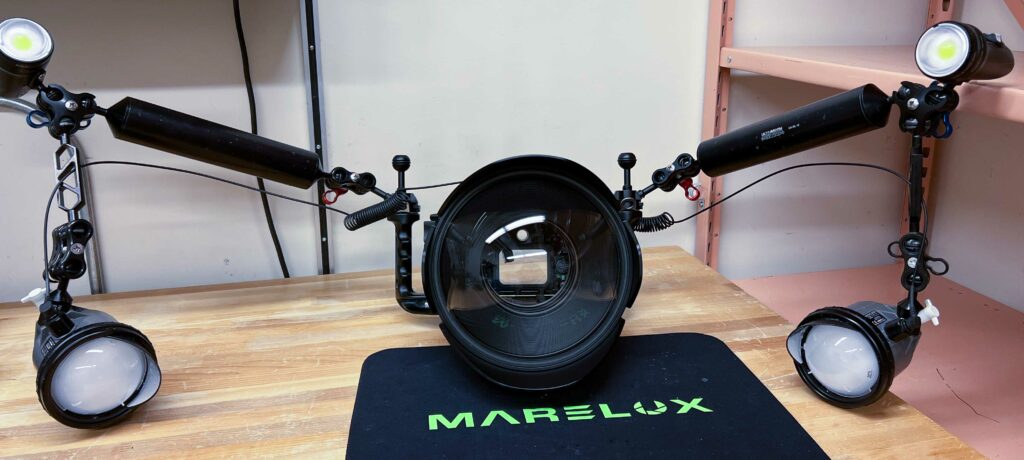
We are super fortunate to be able to use really nice underwater image equipment, cameras that are able to capture images that were simply not possible a few years ago. However, one of the aspects of underwater photography is that if anything leaks, the cameras are toast. Soggy toast (i.e. dead). This means we are vigilantly in trying to keep the housings watertight through cleaning o-rings before and after dives. Here is a short timelapse of me changing one of the cameras from wide angle (with a big dome port) to be ready for a dive where I am going to shoot Macro images. This is really around 30 minutes of work each day.
https://youtube.com/shorts/TeTdGYmq1Ec
(Not sure why the video won’t embed but there is the video link above).

In the video above, I am swapping the camera from Video setup for macro images. Macro is shown above with the wee fish. We use a 100mm lens for that and then strobes and a macro light to be able to get a good image of that. Here is the Macro setup in all of its (super awkward above water but strangely not in the water) setup:

When shooting video we have to use constant lights to light the scene. Red disappears in as little as 2m or 6ft so to get well-colored images we have to be within 1m or 3 ft of our subject (cause the light has to go both ways from our lights to the subject and back). So we use stupid powerful lights to illuminate the scene how it looks to us underwater. We also put a really big dome port on the front to allow our lenses a good angle of coverage. I don’t have the camera in the housing at this point (so you can see right through it).

The final setup is when we use strobes with the dome port. The image at the very top was shot that way. It freezes the action and also lights the scene. The strobes (aka flashes) provide WAY more light than even the most powerful video lights. We connect to the strobes with small fiber optic cables that tell the strobes when to fire when a little red light is emitted from an adaptor in the top of the housing. Here is that setup:



